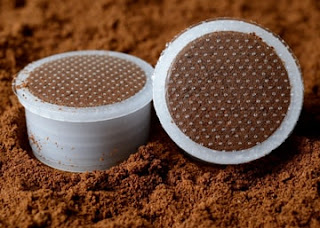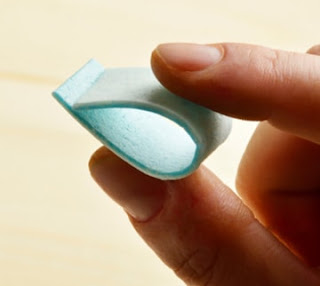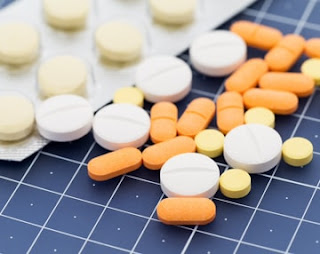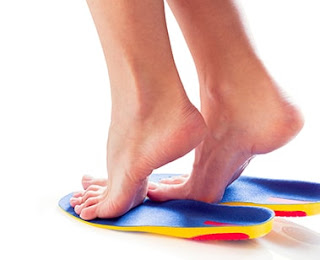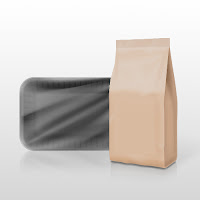How to measure and analyse the texture of food, cosmetics, pharmaceuticals and adhesives.
Tuesday 15 December 2020
How Consumers measure Texture – from first sight to swallow
Tuesday 8 December 2020
Designing the Perfect Texture and keeping track of it
We eat with our eyes, nose, tongue, and ears, so in order to gain maximum enjoyment and pleasure from our food, all of the sensory attributes must be in harmony.
Tuesday 1 December 2020
Texture Analysis in Research: Formulating for an ageing population
Scientists from Poznań University of Life Sciences have been evaluating the mechanical and sensory characteristics of selected foodstuffs for senior citizens.
The population of Poland is one of the fastest ageing communities in Europe. Consequently, it is necessary to adapt the daily diet to these consumers’ requirements. The potential producers of food for senior citizens must allow for elderly people’s possibilities to consume meals (the structural aspect) and their nutritional needs.
Tuesday 24 November 2020
Texture Analysis in Research: Meat & Meat Substitute Products
Tuesday 17 November 2020
Exploring food texture as a tool to fight obesity
Crunch. Squish. Snap. Slurp.
The textures and aromas of our foods trigger reactions in our brains that control how full we feel.
As scientists continue to learn just how, some are seeking to figure out if food textures also play a role in how much we eat. There might be a reason, beyond taste, to explain why a person is inclined to inhale an entire bag of potato chips, or devour a whole plate of cookies. Even more important, the knowledge could be put to good use.
Tuesday 10 November 2020
Extend your Texture Analysis capabilities and increase your testing efficiency
Tuesday 3 November 2020
Texture Analysis in Research: Medical and surgical advances
 Researchers from the University of Indonesia have been investigating a TUR-P phantom for resident surgical training – a food-based design as a human mimicking model of the prostate.
Researchers from the University of Indonesia have been investigating a TUR-P phantom for resident surgical training – a food-based design as a human mimicking model of the prostate. The novel model aimed to be similar to the human prostate in terms of its texture profile, sensation upon resection, and anatomical hallmarks for resident transurethral resection of the prostate training. Ten phantom designs were proposed, using broadly available ingredients and a homemade protocol. They used their TA.XT2i Texture Analyser to measure the samples’ texture profile. The study successfully developed a cost-effective model from a food-based design. Read more
Tuesday 27 October 2020
How Meat Industry Leaders use Texture Analysis to get ahead of their competition
Monday 19 October 2020
Wooing the Senses through Texture
Tuesday 13 October 2020
How Petfood Industry Leaders use Texture Analysis to get ahead of their competition
Tuesday 6 October 2020
Texture Analysis & Flowability of Coffee: Instant, Ground and Bean
Tuesday 29 September 2020
How Fruit Industry Leaders use Texture Analysis to get ahead of their competition
Wednesday 23 September 2020
Testing the integrity of packaging seals - Is Your Seal Satisfactory?
Monday 14 September 2020
How Haircare Industry Leaders use Texture Analysis to get ahead of their competition
Tuesday 8 September 2020
Texture Analysis in Research: Its Importance for 3D Printed Foods
Using this tool, a food product or a whole meal can have its ingredients tailored to meet the needs of a patient in hospital or a care home, leading to a better recovery. 3D printing also has the potential to make life easier for those people who use health trackers. There is a possibility that in the future, the user’s fitness tracker can send data to the 3D printer, which will output a meal perfectly tailored to that person’s requirements.
Tuesday 1 September 2020
How Confectionery Industry Leaders use Texture Analysis to get ahead of their competition
Wrigley have been using their TA.XTplus for quality control in a range of products for decades now. In addition to new product development and troubleshooting, the effects of formulation changes on chewing gum texture have also be assessed.
Over the past two centuries, gum manufacturers have embraced materials science to produce a product that has a wide variety of benefits, from cavity protection to enhanced mental concentration.
Tuesday 18 August 2020
How Bakery Industry Leaders use Texture Analysis to get ahead of their competition
By combining the Texture Analyser’s ‘V’ Squeeze test with simultaneous acoustic measurements, Zeelandia pioneered a new method to determine the crustiness of bakery products to obtain detailed objective analysis of crust breakage.
Henk Mulder, physical scientist at Zeelandia, commented, “Stable Micro Systems’ equipment is extremely accurate and versatile. Manual tests, and even our previous lab testing methods, didn’t give us enough detail to draw meaningful conclusions for our NPD or quality control purposes.
Tuesday 11 August 2020
Six Ways to Test the Physical Properties of a Tablet
During compression, the ingredients can have a large effect on physical factors. For example, abrasiveness, moisture content and particle size all affect compressibility. Considerations must also be made of the properties of the finished product.
During their manufacture, tablets are
subjected to a great deal of physical abuse within the hopper in which they are
spun. During this time, chipping may occur. The extent of this depends on
tablet hardness. It is undesirable in terms of product quality and is also a
potential health risk to the consumer.
Tuesday 4 August 2020
Stickiness in Foods - Desirable or unwanted?
Tuesday 28 July 2020
The Packaging Research Revolution: Biodegradable Polymer Films
Tuesday 21 July 2020
The Packaging Research Revolution: Biodegradable polymer foams and rubbers
Tuesday 14 July 2020
Texture Analysis to Measure the Effects of Enzyme Addition on the Staling of Artisanal Bread: Part 3 – Texture Analysis Techniques
Tuesday 7 July 2020
Texture Analysis to Measure the Effects of Enzyme Addition on the Staling of Artisanal Bread: Part 2 - How can the Specifics of Staling Be Slowed or Prevented?
More importantly, enzymes, additives and emulsifiers can be added to counteract the mechanical property changes associated with staling. However, out of the three, the focus for artisan bread should be on enzymes.
It is not only the finished loaf that is affected by enzyme addition. The dough itself is also affected, and this can be useful for the manufacturer. Enzymes can be used to give a soft, elastic dough with low stickiness.
Monday 29 June 2020
Texture Analysis to Measure the Effects of Enzyme Addition on the Staling of Artisanal Bread: Part 1 – Why does Staling Occur?
However, there has been a movement over the last decade or two towards products that are marketed as ‘clean label’, ‘plant-based’ or ‘artisan’, so supermarket shelves are seeing a shift from soft crust, cuboid loaves in coloured plastic bags to rustic looking crusty bread. Artisan bread is a term that has no absolute definition but refers to a style of short shelf-life bread that is usually offered unpackaged (in baskets) and consumed immediately after baking for maximum freshness.
Tuesday 23 June 2020
Texture Analysis in Research: Latest Fish applications
Seafood is an excellent source of nutrition and provides numerous health benefits. A rise in awareness about these benefits is helping to drive the growth of the global seafood market, as well as other factors such as increasing disposable income, changing lifestyles and consumer diet preferences.
Tuesday 9 June 2020
Texture Analysis in Research: Fat Replacers
Sometimes that replacement is another type of fat, or it might be another ingredient altogether (to reduce the overall fat content of the food). Food manufacturers have to test the altered food in comparison with its original form to ensure that all textural properties remain the same within acceptable limits.
Monday 8 June 2020
Dairy alternative market set to cause a stir
Factors like increasing awareness of consumers toward a vegan diet, lactose intolerance among the population and demand for various fortified dairy food and beverage applications are boosting the market growth. Whilst the high cost of dairy alternative milk and prominence of low cholesterol and low fat conventional milk will impede the market growth, the innovation in flavour and sources of dairy alternative beverages and increasing demand for soy milk, rice milk and almond milk proteins provide wider opportunity for the market to grow.
Tuesday 26 May 2020
Texture Analysis in Research: Confectionery
 |
| Three point bend test |
Confectionery ingredients provide stability, texture, and various other properties, and therefore, can be used to prepare a variety of food products.
More than 70% of consumers prefer the use of products that contain natural ingredients and therefore chose the products that claim to have no artificial ingredients. The trend for the use of clean-label products is rising due to the increase in health awareness among the consumers, and therefore, the manufacturers of confectionery products are attempting to make use of ingredients to develop innovative products that have low-fat content, low sugar content, etc. The development of such food products might attract health-conscious consumers, and thus, there might be an increase in the confectionery ingredients market.
Monday 18 May 2020
Tuesday 12 May 2020
Texture Analysis in Research: Latest Dentistry applications
Tuesday 5 May 2020
Campden BRI defines cake 'fluffiness'
Monday 27 April 2020
The Packaging Research Revolution: Biodegradable Polymer Films
Monday 20 April 2020
Texture Analysis: Latest Meat Applications
Meat and poultry production industries result in large amounts of organic waste, rich in collagen. Scientists from the University of Oslo have been investigating collagen from turkey tendons as a promising sustainable biomaterial for pharmaceutical use. The aim of this study was to isolate and characterise pepsin soluble collagen from turkey tendons.
Thursday 16 April 2020
Tribology testing continues on the Texture Analyser
Practical applications of this testing are relatively straightforward: lubricants that provide low amounts of friction between sliding steel surfaces are useful to reduce friction from surface-surface contact, such as in mechanical pivots or sliding pistons.
Monday 13 April 2020
Texture Analysis in Research: Insects as Food
 With 9.6 billion people forecast to inhabit the planet in 2050, scientists have warned that population growth could lead to an unsustainable increase in food production if consumption patterns persist.
With 9.6 billion people forecast to inhabit the planet in 2050, scientists have warned that population growth could lead to an unsustainable increase in food production if consumption patterns persist. Considering the rising world population and the scarce water and land resources, it is extremely important to find new and sustainable ways to produce food. Edible insects are particularly interesting due to their high protein content and lower environmental impacts compared to traditional livestock. They have been promoted as a source of nutrients able to contribute to the increasing need of animal protein in an environmentally sustainable fashion. In general, insects contain a considerable amount of protein with a well-balanced amino acid spectrum, a high amount of lipid, and a noteworthy content of micronutrients such as copper, zinc, and iron.
Tuesday 7 April 2020
Testing Clean Label Personal Care & Cosmetic Products
What’s behind the trend? Consumers are demanding products that they perceive are better for their bodies, families, and the environment. Market research shows consumers now rank natural ingredients and environmental impact ahead of brand
Monday 30 March 2020
Texture Analysis in Research: Testing Skin

The study of the mechanical properties of soft tissues is valuable to evaluate the progress of diseases such as tumours and treatment effects, to simulate medical surgeries, to understand the aging process and to evaluate the efficacy of cosmetic products. Yet again, the Texture Analyser has proven to be an invaluable tool in the measurement of such samples.
Recently researchers from the National University of Colombia have investigated the influence of indentation test factors on the mechanical response of skin.
Tuesday 24 March 2020
Making up for Texture in Egg Free Food
Eggs play an important part in a lot of cooking because they have so many interesting functions. They can add shine to the top of pies, emulsify sauces, aerate chocolate mousse and add moisture and fat to cake.
Tuesday 17 March 2020
Texture Analysis in Research: Latest Medical Applications
Foot orthoses alter the kinematics and kinetics of gait. With increasing importance of evidence-based practice and with the permanent development of subtractive manufacturing and introduction of additive manufacturing, there is a growing need for the quantification of orthoses parameters. This paper describes a measurement method and protocol to quantify different parameters of a foot orthosis.
Tuesday 10 March 2020
Consumers crave novel flavours, heat and unusual texture
As such, it is crucial that food and drinks are not only seen as appealing now but create some sense of excitement and adventure among consumers. Brands should push the boundaries of sensory appeal by continuing to launch products with new and innovative flavours and textures. The goal, when applicable, is to see these unusual flavours combined with novel textures and colours to create a truly unique consumption experience.
Tuesday 3 March 2020
Texture Analysis in Research: Aging Population
Easy to eat food is increasingly required in the advanced-aged society in Japan. Mechanical properties of such foods must be modified such that the foods are easily broken by the tongue without chewing. When foods are compressed between the tongue and the hard palate, the tongue deforms considerably, and only soft foods are broken. To simulate tongue compression of soft foods, artificial tongues with stiffness similar to that of the human tongue were created using clear soft materials.
Tuesday 25 February 2020
The Textural Challenges of a Vegan Diet
 Veganism is growing in popularity due to increased education about its environmental, health and ethical benefits.
Veganism is growing in popularity due to increased education about its environmental, health and ethical benefits. An Alpro report from 2018 (‘Plant-Based Profits with Alpro and BB Food Service’) stated that the UK plant based market at the time was worth £443m, having grown by £129m in three years. Due to this growth, vegan alternatives to products traditionally made with animal produce have swarmed the food market, and most use the new term ‘plant-based’ to describe a vegan product. It is now possible to buy a vegan version of almost every animal based product from chocolate fudge cake to crispy duck, and new companies are popping up that are dedicated solely to plant alternatives.
Tuesday 18 February 2020
Designing the best potato chip
 Researchers have developed a method to analyse the physical characteristics of a potato chip at four stages of eating — from the first bite to the final swallow — to help formulate a tastier low-fat snack. The results of the research have been reported in the Journal of Agricultural and Food Chemistry.
Researchers have developed a method to analyse the physical characteristics of a potato chip at four stages of eating — from the first bite to the final swallow — to help formulate a tastier low-fat snack. The results of the research have been reported in the Journal of Agricultural and Food Chemistry. While munching on low-fat potato chips might reduce the guilt compared with full-fat versions, many people don’t find the texture as appealing. Cutting fat in potato chips usually involves reducing the vegetable oil content but it’s the oil that helps give the product its characteristic crunch, taste and mouthfeel.
Tuesday 11 February 2020
Food On the Go
Tuesday 4 February 2020
Texture Analysis in Research: 3D printing Applications
The resistance to deformation of printed and moulded capsular devices was measured under compression using their TA.XTplus Texture Analyser.
This study helped to develop delivery methods for enhanced customisation of drug combinations.
Read more >
Tuesday 28 January 2020
Texture Analysis Latest Alternative Protein Applications
Consuming meat for many is a part of their daily life, but the majority are opting for a healthy version by switching to non-meat foods for catering to their protein needs.
Avoiding or restricting meat in the diet may be challenging, yet with the nutritional, environmental and health benefits of selecting meat substitutes over meat, this challenge will be worth the effort.
Tuesday 21 January 2020
Why measure just one Texture Analysis parameter?
The current methods to assess fruit firmness give limited information on the evolution and the mechanisms of softening.
Thursday 16 January 2020
Texture Analysis in Research: Packaging Applications
The holy grail of packaging development is now to present a recyclable, compostable, biodegradable and environmentally friendly solution which does not compromise on packaging integrity and desired performance.
Researchers from the National University of Trujillo have been investigating biodegradable foam trays based on starches isolated from different Peruvian species.
Texture Analysis in Action: Universal Sample Clamp
 |
| Universal Sample Clamp |
The penetration of a margarine sample, the cutting of a piece of meat or the backward extrusion of a thick moisturising cream are typical examples when this may occur.
The resulting measured forces of this occurrence will be displaying the weight of the material (and/or its supporting packaging) being lifted rather than the forces necessary to withdraw from the sample. If lifting of the sample occurs the graph that is obtained will not therefore reflect the entire true textural profile of the sample.









